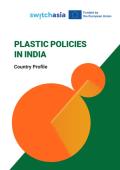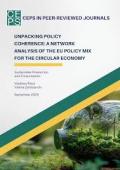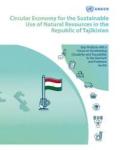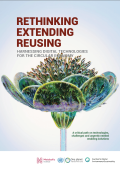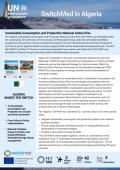
Circular Economy which is best described as an "industrial system that is restorative or regenerative by intention and design. It replaces the ‘end-of-life’ concept with restoration, shifts towards the use of renewable energy, eliminates the use of toxic chemicals, which impair reuse, and aims for the elimination of waste through the superior design of materials, products, systems, and, within this, business models’’(Circular Impacts, 2017). The Circular Economy model improves resource efficiency and reduces environmental impact on natural capital by designing products in a more recyclable way, adopting efficient technology, and turning waste into a resource.
The circular model of growth, decoupled from the consumption of finite resources and capable of delivering resilient economic systems, is increasingly looked upon as the next wave of development (Ellen MacArthur Foundation, 2015). To realise this outlook, governments and business must adapt systemic approaches to address the remaining challenges to resource efficiency, especially in sectors such as manufacturing, food and construction. The importance of transitioning to a circular economy is increasingly recognised by the global community. The European Union, for example, has developed this model: a low-carbon, resource-efficient and increasingly circular economy characterised by high employment, technological innovation and sustainable growth (ICTSD, ERCST, 2018). The Commission adopted a Circular Economy Package to stimulate the transition of European businesses and consumers towards a circular economy, where resources are used in a more sustainable manner. The idea of a “circular economy” is also promoted internationally, including by China, the European Commission, Japan and many others (UN International Resource Panel, 2016).
Relevance to the SDGs
The Circular Economy is embodied in Sustainable Development Goals (SDG) 8, 9 and 12. SDG 8 promotes a sustained, inclusive and sustainable growth, within others, through the improvement of global resource efficiency in consumption and production. SDG 9, on sustainable infrastructure and industrialisation, urges industries to adopt resource efficient and environmentally sound technologies. SDG 12 addresses the sustainable consumption and production emphasise the resource efficiency and waste reduction.
SDG 8.4
Sustainable Consumption
and Production SDG 9.4
Green Industry
SDG 12.2
Natural Resource
Management SDG 12.5
Waste Management
The circular economy concept has taken the business and policy world by storm.
In a circular economy, waste is minimised along the entire life-cycle of a product, including reducing waste during raw material sourcing, design and manufacture, and eliminating the disposal of products by reusing, refurbishing, or recycling them. This resource efficiency leads to a cost reduction for companies, and the environmental benefits may increase customer loyalty and fortify industry reputations. Promoting a circular economy also provides businesses with an incentive to become more innovative, flexible, and competitive.
The World Economic Forum estimates that adopting a circular economy model would save over US $1 trillion per year from materials savings alone, and could help to reduce resource prices and supply disruptions. There are a number of global efforts focused on supporting a circular economy by assisting businesses adapt their operations, including international initiatives such as the Platform for Accelerating the Circular Economy and the Ellen MacArthur Foundation.



